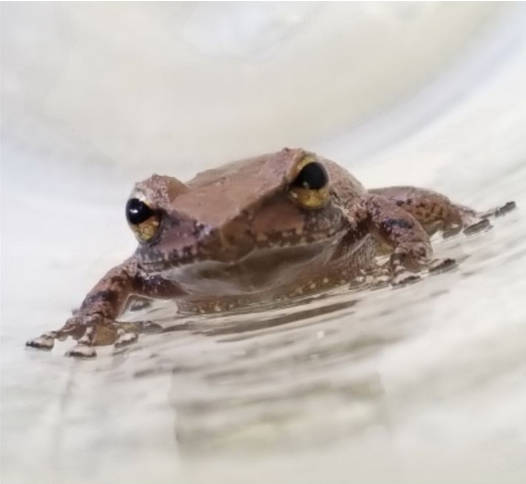LIHUE — Rapid response efforts for coqui frogs and rapid ohia death will remain top of mind in 2019 for Kauai Invasive Species Project, which just released its 2018 End of Year Update.
“It’s been a busy year to say the least,” the report says in the opening paragraph and then details a laundry list of field updates and reports from 2018.
Rapid ohia death spread to Kauai in 2018 and made invasive species headlines, with the less aggressive form discovered in Moloaa trees in May and then the more aggressive form discovered in mid-December.
Focused work on targeting that species will continue through 2019.
“We are working in partnership with DOFAW to determine the extent of the presence of ROD and appropriate management techniques to prevent the further spread while also encouraging increased biosanitation practices by Kauai forest users,” said Tiffani Keanini, KISC project manager.
2018 brought coqui frogs to Kapahi and eight frogs were captured during the year, which KISC says raises concerns that a breeding group might once again be on Kauai.
The last time that happened was in Lawai and that population was declared eradicated in 2012.
Likely, these frogs are stowing away on cargo or in plants shipped from other islands and are known for their loud, piercing calls.
“We are currently working in partnership with HDOA on the recent coqui reports,” Keanini said.
In good news, KISC reports that there was no evidence of a mongoose population on Kauai in 2018, and that’s measured using more than 1,000 tracking tunnels deployed islandwide.
These tunnels are equipped with bait and ink-pads to record paw prints. Tracks recorded included cats, rats and mice.
And looking forward into 2019, KISC says early detection and rapid response are going to be the main focus with the goal of preventing more invasive species from taking hold on Kauai.
Keanini said it’s difficult to say which species will be the greatest threat to Kauai in 2019, as there are multiple species that have potential for devastation.
“Currently, we are focusing our priority on rapid response in partnership with DOFAW to C. lukuohiaon (Rapid ohia death) Kauai, while simultaneously maintaining our control and detection efforts on other target species,” Keanini said.
And when it comes to the successes of 2018, Keanini said it was due to collaboration with the community and other organizations.
“The continued success of any program that contains or eradicates an invasive species is dependent on vigilance of the community and successful teamwork with partners, using a variety of adaptive management strategies while working together towards a common goal,” she said.
•••
Jessica Else, environment reporter, can be reached at 245-0452 or jelse@thegardenisland.com



Find and kill the frogs that are here and ban all imports of plants that carry the frogs or eggs NOW